Penis Augmentation in Panama
Search and Compare the Best Clinics and Doctors at the Lowest Prices for Penis Augmentation in Panama
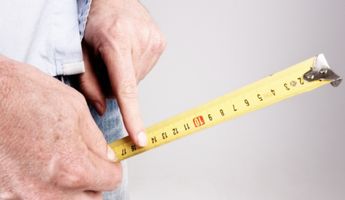
Find the best clinics for Penis Augmentation in Panama
No clinics available
Egypt offers the best prices Worldwide
Price: $ 500

- Home
- Panama
Compare Before & After Photos of _procedure_photos.phpPenis Augmentation
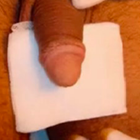
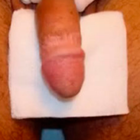
Front view

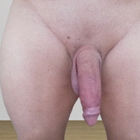
Front view
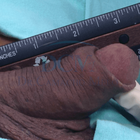
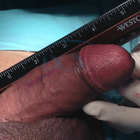
Half-side view

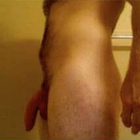
Full-side view
WHY US?
At Medijump, we're making medical easy. You can search, compare, discuss, and book your medical all in one place. We open the door to the best medical providers worldwide, saving you time and energy along the way, and it's all for FREE, no hidden fees, and no price markups guaranteed. So what are you waiting for?

Free

Best Price

Widest Selection

Risk-Free
What you need to know about Penis Augmentation in Panama
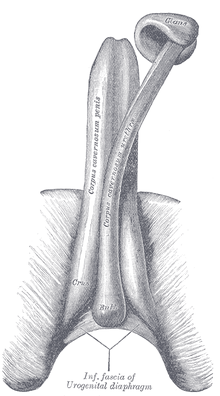
Also known as a Penis Enlargement, Penis Enhancement, Phalloplasty or the Penoplasty and involves any technique aimed to increase the size of the penis, where some procedures aim to increase total length, others may increase the shaft's girth. The Penile Implant is an alternative technique that is more common among those with erectile dysfunction. The procedure is performed under general anesthetic and can be completed in 45-60 minutes.
The most common procedure involves lengthening the flaccid penis by releasing the muscle at the Mons Pubis, but there is also the option for a fat transfer, which combined with liposuction, is particularly useful for increasing the girth. Note that these procedures aide in increasing the length of the flaccid penis only, the erect length remains the same.
To increase the length of the erect penis, a form of penile disassembly is required, where the head is detached and the extra tissue is grafted into the shaft - this technique takes longer and is more expensive. All techniques require two nights of hospitalization and a recovery time of 10-14 days in Panama.
What is the cost of Penis Augmentation in Panama?
The expense related to the Penis Augmentation in Panama can differ based on many factors. These encompass the particular details of the operation, the competency of the medical professional, and the amenities provided by the selected healthcare center.
Although being mindful about cost is logical, it's vital not to sacrifice the standard of treatment. A credible healthcare institution will be clear about the expenses, offering you an itemized elucidation. Additionally, it's beneficial to explore if your medical insurance provides any coverage for the operation or related care.
What does a Penis Augmentation Procedure Involve?
Before proceeding with the surgery, you will have an extensive consultation with your surgeon to determine whether the procedure is suitable for you. You will discuss your expectations and it is important to be realistic to avoid disappointment. You should also inform your surgeon about the reasons why you want to undergo the surgery. Your surgeon will get you to do a physical examination to find out if you have any medical conditions and to help your surgeon evaluate the best treatment option for your specific case.
During the surgery you will be given general anesthesia, meaning you will be asleep and will not feel anything. The most common types of penis augmentation surgery are:
- Penis girth surgery is aimed to increase the thickness of your penis in a flaccid and erect state. Your surgeon will perform a small liposuction procedure to harvest fat from the abdomen, thigh, or buttock. The fat is then purified with a system to improve the quality of the fat. The last step is distributing the fat along the shaft of the penis to thicken it. Some studies claim an increase in girth of around 1.4 cm to 4 cm.
- Penis length surgery can give the flaccid penis an average of 2 cm, but it cannot change the size of the erect penis. During the surgery, your surgeon will cut the ligament where the penis is attached to the pubic bone. Then, your surgeon will perform a skin graft at the base of the penis to allow for extra length.
-
Liposuction is a surgical procedure to remove fat from below the abdomen which can reveal up to 2 cm of the penis that had previously been buried. By removing excess fat around the pubic area, a partly buried penis can appear more prominent. This procedure works well with men who have a large tummy. However, if the man puts on weight again, the fat will return to the pubic area and may bury the penis again.
-
Penuma is a device inserted under your penis skin to make it longer and wider. It is crescent-shaped and made of medical-grade silicone. It comes in three sizes: large, extra-large, and extra-extra-large. It will be designed to fit your penis shape. Your surgeon will make an incision in your groin area just above the base of your penis to insert the Penuma. The device will stretch the penis skin and tissues to make your penis look and feel larger. If you are not already circumcised, you will need to do it before the procedure.
How Long Should I Stay in Panama for a Penis Augmentation Procedure?
In general, it takes around 45 minutes to an hour to complete a penis augmentation. You may go back to your hotel on the same day of the surgery after the effects of the anesthesia wears off. However, there are some cases where the patient will require a two nights stay at the hospital.
Plan to stay in Panama for at least 10 to 14 days. During your stay, it will allow for the initial recovery and you will attend follow-up checkups.
What's the Recovery Time for Penis Augmentation Procedures in Panama?
You will need to take some time off work after this surgery, normally one week if your job does not involve any physically demanding activity. If your job involves a lot of moving around, you can go back within 2 weeks.
Avoid any strenuous activity, including exercise for around six weeks. Do not have any sexual intercourse or masturbation for around four weeks. It may take around three to six months before you will see the completed result.
What sort of Aftercare is Required for Penis Augmentation Procedures in Panama?
Your surgeon will give you a set of instructions about post-operative care and you will need to follow the instructions. Pain and soreness following the surgery are normal and your surgeon will give you painkillers to control the pain. A surgical dressing will cover your penis, which will need changing at intervals.
You will need to keep the area clean, but avoid getting water on the area. Use a flannel or a sponge to clean the area. Your surgeon may ask you to massage your penis on a daily basis to prevent lumps from forming on the surface and to stop it from becoming lop-sided. Avoid heavy lifting and other strenuous activity and wait for a month before you resume any sexual activities.
What's the Success Rate of Penis Augmentation Procedures in Panama?
The success rate is high and the procedure can give the patient a significant confidence boost. Patients often cite the improvement of premature ejaculation (sexual stamina) and increased libido. Feeling and sensitivity are not affected and the patient is still able to ejaculate as normal, therefore the chances of conceiving are not impacted. A study found that 81% of patients who had Penuma rated their results high or very high.
For an animated display of how the penis augmentation procedure works with before and after images, watch this short video.
Are there Alternatives to Penis Augmentation Procedures in Panama?
The penile implant is an alternative technique, but it is more common among those with erectile dysfunction. Non-surgical alternatives to this surgery are pills, lotions, vacuum devices, penile extenders, and jelqing (stretching techniques). However, no study confirms the success of those procedures.
What Should You Expect Before and After the Procedure
Familiarizing yourself with the anticipation of the Penis Augmentation can substantially decrease stress and better equip you physically and emotionally. Before the process, you'll undertake an in-depth conversation with your medical expert, discussing the procedure, potential hazards, and projected results. They will mentor you on the essential preparatory steps, which might encompass advice on nutrition and lifestyle patterns. It's crucial to abide by these guidelines to set the best possible environment for a triumphant procedure and speedy recovery.
After the Penis Augmentation, it's ordinary to feel some level of discomfort, inflammation, or bruises, which are expected after-surgery responses and part of the natural recovery course. Your medicinal specialist will hand over comprehensive after-surgery care instructions, including medicines timings, relaxation, proper diet, and sleep positions. Complying entirely with these instructions can encourage a speedy recovery and lessen possible complications.
What are Potential Risks of Penis Augmentation?
Nonetheless, there are still risks and complications that you will need to be aware of.
- For penis length surgery, the cut ligament may not provide the support it originally did, which could lead to less satisfactory erections. In addition, it can also cause pain during sex.
- For girth surgery, some patients may experience scarring, disfigurement, infection, and lumpiness.
- Other complications include implant coming apart, and blood cloth.
Whilst the information presented here has been accurately sourced and verified by a medical professional for its accuracy, it is still advised to consult with your doctor before pursuing a medical treatment at one of the listed medical providers
No Time?
Tell us what you're looking for and we'll reachout to the top clinics all at once
Enquire Now

Popular Procedures in Panama
Prices Start From $95

Prices Start From $556

Prices Start From $1,795

Prices Start From $1,000

Prices Start From $322

Prices Start From $275

Recommended Medical Centers in Panama for procedures similar to Penis Augmentation

- Interpreter services
- Translation service
- Religious facilities
- Medical records transfer
- Medical travel insurance
- Health insurance coordination
- TV in the room
- Safe in the room
- Phone in the room
- Private rooms for patients available
Penis Augmentation in and around Panama
Introduction
Situated as a transcontinental entity, the Republic of Panama straddles the geographic crossroads of Central and South America. The inception of the Panama Canal in 1914 propelled this country into an integral position as a nexus between the Caribbean Sea and the Pacific Ocean. Those who are drawn to visit this radiant country find themselves ensnared in a mesmerizing display of cerulean seas, diverse fauna, deserted islands, bountiful coffee farms, and awe-inspiring rainforests.
The Republic of Panama unites the corners of the world, bridging the two American continents as a vibrant transcontinental nation. The construction of the Panama Canal in 1914 marked a turning point, positioning the nation as a crucial crossroad - connecting the vast expanse of Caribbean waters with the Pacific. The travelers who venture into this country discover an array of rewards awaiting them. The breathtaking beauty of sparkling blue waters, a plethora of enthralling wildlife, desolate islands that evoke an air of tranquility, sprawling coffee plantations, and the awe-striking charm of lush rainforests contribute to the diverse and enticing experiences that Panama has to offer.
Over the past several years, the Republic of Panama is steadily gaining renown as a preferred medical tourism hotspot for myriad individuals across Europe and the United States. The medical professionals operating within the country receive their robust education and accreditation from the United States, thus ensuring their expertise extends to the vanguard of their respective fields. The blend of these proficient doctors and superb medical infrastructure, combined with reasonable pricing on a wide range of medical practices, contributes to Panama's appeal for healthcare needs. Whether one seeks remedial treatments or desires elective cosmetic surgery, there are an ample array of high-quality, cost-effective services available in this picturesque country.
In the recent panorama, Panama has noticed a swift surge in its recognition as a prime choice for medical tourism, attracting numerous Europeans and Americans to its shores. Professionally trained and certified in the United States, the doctors in Panama stand at the forefront of their respective medical fields. Contributing to its desirability as a medical tourism hub is the high-quality care provided by these adept medical practitioners, alongside state-of-the-art healthcare facilities. The affordability of medical procedures in Panama further heightens its appeal. From treatments aimed at correcting medical conditions to elective cosmetic surgeries, the striking beauty of Panama, coupled with its comprehensive and affordable healthcare solutions, makes it an ideal medical destination for individuals worldwide.
Popular Cities and Regions in Panama
Known as the most cosmopolitan capital within the region of Central America, Panama City opens the door to a multitude of tropical getaways while donning the hat of a bustling metropolis. Serving as a focal point for trade and immigration within the region, Panama City represents a vibrant blend of diverse cultures; a veritable melting pot where different backgrounds meet and meld.
Being the epitome of cosmopolitan magnificence in Central America, Panama City beams as the gateway to a spectrum of tropical retreats and simultaneously thrives as a bustling urban settlement. It stands as a central hotspot for regional trade and immigration practices, thereby birthing a profusion of cultures. This city, with its diverse cultural influences, serves as a sophisticated melting pot, crafting a harmonious blend of a myriad of cultures.
Some of the more popular tourist attractions are Teatro Nacional, Panamá Viejo, Donde José, and Parque Natural Metropolitano. Although the capital attracts thousands of tourists each year, the most popular destination is Bocas del Toro. Combining a laid-back Caribbean vibe with the incredible natural setting of forests, jungles, and mangrove, this seaside town is where adventure and relaxation meet. Surfing and snorkeling are extremely popular in this town. However, the real talking point is relaxing in a secluded cove which can only be reached by water taxis.
Transport in Panama
The primary international portal into Panama is the Tocumen International Airport, serving as a critical regional hub for flights moving in and out of The Caribbean, as well as North, South, and Central America. Additionally, it accommodates flights from select cities across Asia and Europe. For intra-country travel, domestic flights are the quickest mode of transport; however, the speed comes with a higher price tag.
Road travel presents a more economical alternative, with buses being the most widely used and cost-effective means of transportation across the country. Within the confines of major cities, taxis are readily available for residents and tourists alike.
Tocumen International Airport is the premier international aerial gateway into Panama. This airport stands as a regional transport hub, connecting Panama with destinations across the Caribbean, North, South, and Central America — even heralding flights from certain European and Asian cities. To journey within Panama, domestic flights offer the quickest, albeit pricier, option. For those prioritizing affordability over speed, buses provide a popular and budget-friendly choice.
Further adding to the transportation options in Panama is the accessibility of taxi services. For those traversing within the major urban areas of the country, taxi services make intra-city travel a breeze. These easily available taxis contribute significantly to the efficiency of short distance commutes.
Additionally, getting around within the key city areas in this country is seamless thanks to the taxi services. For intra-city commutes in Panama's principal urban centers, taxis stand as a thoroughly accessible choice for transportation, simplifying movement within the cityscape.
Visas in Panama
Panama allows citizens of most countries, including all EU citizens and Americans, to visit the country without a visa for 180 days. Some other countries, such as China and the Philippines, need a visa to visit the country. All visitors need to hold a passport valid for at least 6 months.
-
Citizens of over 100 countries, including all EU nations and the United States, can visit Panama without a visa for up to 180 days.
-
Nationals of countries not included in the visa-exemption list need to apply for a visa before traveling to Panama.
-
All visitors must have a valid passport with at least six months remaining validity from the date of entry.
-
Proof of onward travel may be requested upon arrival.
Weather in Panama
Situated comfortably within the tropics, Panama's climate is characterized by distinctive wet and dry seasonal variations. Spanning from mid-March through to December, the wet season tends to bring rainfall every alternate day. However, the showers are typically brief and they mainly occur during afternoon hours, but this season also tends to be quite humid. On the other hand, the dry season extends from December until March. Throughout this time frame, the likelihood of witnessing rainfall dramatically decreases, resulting in overall drier conditions.
Given its tropical location, Panama experiences two distinct seasons: the wet and the dry. Commencing in mid-March and continuing until December, the wet season brings periodic rainfall, which typically occurs in short, intense bursts during the afternoon. However, tourists should remember that humidity levels can peak during this time. Conversely, the dry season, which stretches from December through March, ushers in a period of minimal rainfall, offering a drier climate.
Additional Info
- Local Currency: The official currency is the balboa. The rate of exchange has always been tied to the US dollar. 1 USD equals 1 PAB.
- Money & Payments: ATMs are readily available in most cities and towns. Credit cards are accepted at upscale hotels and restaurants. Tipping is customary.
- Local Language: Spanish is the official language of Panama, as well as the most widely spoken. English is one of the most popular foreign languages.
- Local Culture and Religion: The main religion in Panama is Christianity. However, Buddhism, Judaism, and other religions are also practiced.
- Public Holidays: Panama celebrates Mardi Gras, Los Santos Uprising Day, Independence Day, and Christmas Day among others.
Popular Searches
- Plastic Surgery in Thailand
- Dental Implants in Thailand
- Hair Transplant in Thailand
- Breast Augmentation Thailand
- Gastric Sleeve in Thailand
- Gender Reassignment Surgery in Thailand
- Laser Hair Removal in Bangkok
- Botox in Bangkok
- Dermatology in Bangkok
- Breast Augmentation in Bangkok
- Coolsculpting in Bangkok
- Veneers in Turkey
- Hair Transplant in Turkey
- Rhinoplasty in Turkey
- Stem Cell Therapy in Mexico
- Rhinoplasty in Mexico
- Liposuction in Mexico
- Coolsculpting in Tijuana
- Rhinoplasty in Korea
- Scar Removal in Korea
- Gastric Sleeve in Turkey
- Bone Marrow Transplant in India
- Invisalign in Malaysia
- Plastic Surgery in the Dominican Republic
- Tummy Tuck in the Dominican Republic
- Plastic and Cosmetic Surgery in Poland
- Rhinoplasty in Poland
- Hair Implant in Poland
- Dental Implants in Poland
- IVF in Turkey